
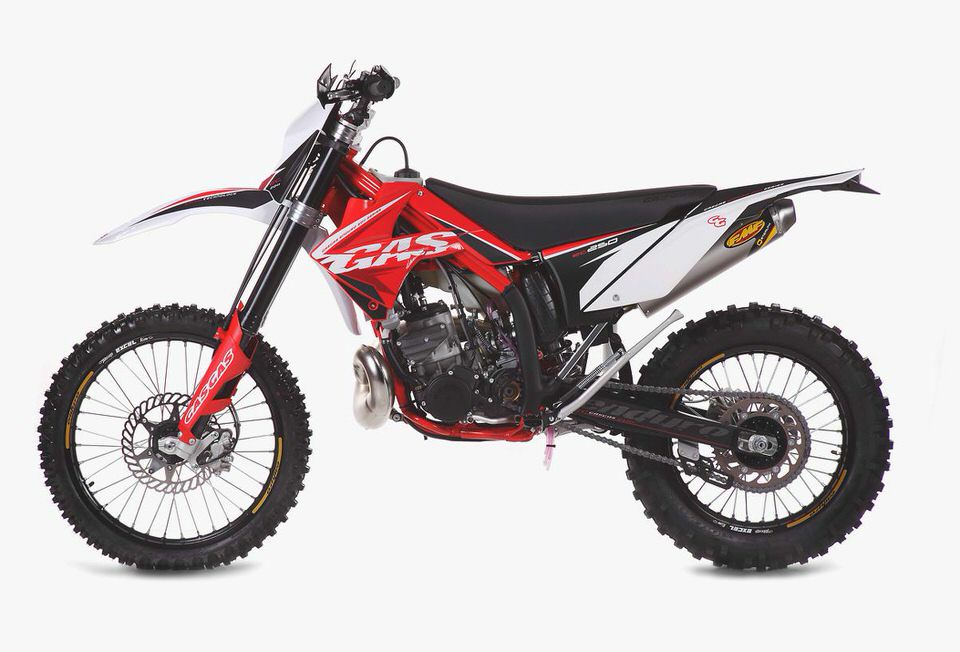
2011 Gas Gas 300 “Six Days”
Ok, just so everyone knows. I am a Gas Gas guy. Well I don’t actually own one, but I have had a number of them. I also used to work for them and although that has been nearly ten years ago now, it is just one of those things that just follows me around. I still regularly have people ask me about the bikes or want to know if I still ride them.
I think it has been the case that there has been so little information about them (at least in the west) available over the last few years, I get those inquires simply because people do not know who else to ask.
Gas Gas is Spanish with roots clear back to Bultaco. They started building off road bikes in the early ‘90’s using TM motors in their own frames. Paul Edmonson won a WEC 125 title on them around 1993. In 1999 Petteri Sylvan was the WEC overall champion on an EC250.
By 2000 the bikes featured a Kawasaki style perimeter frame with a motor that borrowed many design components from both Honda and Kawasaki. In recent years the French have really taken to the brand with Christophe Nambotin and female phenom Lulu Puy winning world championships on the bikes. Next season will also find Ivan Cervantes on the Spanish brand.
There has been a steady, if slow, progression of the design. The frames have continued to evolve as have the suspension components. Many of the changes have been gradual and not very radical.
It has almost played against the Spanish company as buyers are used to radically new concepts being rolled out by the competition every few years. Of course not all new concepts stand the test of time all that well. Finally for 2011 we have a Gas Gas model that actually “looks” brand new.
If you read my last review of the EC300 from 2009 you will see that I was pretty happy with the bike. I actually qualified for the ISDE at the Idaho City race on it. I came away from that test with two primary complaints. First was the suspension. Gas Gas had switched to the Sachs components front and rear.
The twin chamber fork was a harsh ride and the shock was just middle of the road for feel and action. The biggest issue with the fork was the difficulty of working on it. The shim size was unique and parts had to be ordered from Europe to do a revalve.
My second complaint was with the brakes. Call me spoiled, but KTM has raised the bar so far on this front that many bikes feel weak by comparison. As the Gasser used familiar Nissan components I knew that it should not be that difficult to fix, I just never got around to working on it.
The real problem that comes from riding with poor suspension and brakes is that the two issues seem to compound each other. On the ’09 bike I would find myself coming into a choppy or rough corner and I couldn’t get the bike under control to slow down and turn. That made track riding very challenging, as I could never really get up to speed comfortably.
For this season the big news is that the Spanish bikes get a new frame. The new design uses a “B” shaped Cromoly tubing mated to castings. The design provides more strength down low around the motor and swingarm, along with better controlled flex up high.
The foot peg mounts are also beefed up.
More importantly for me, the Sachs suspension components have been ditched in favor of a Marzocchi fork and Ohlins shock. Neither are the top of the line offerings from the companies but both work well.
The smallish 45mm fork comes with an open chamber cartridge. It is not the KYB unit as I previous mentioned, but ‘Zokes own design. The legs get the cool black DLC (diamond like coating) finish.
I have not looked inside yet, but I am told these are a conventional cartridge design and easy to work on.
The Ohlins 888 shock is pretty straightforward. It has both high and low speed compression adjusters. One nice feature is the new nylon adjuster ring for the spring preload.
This allows you to loosen the locking bolt and then spin the adjuster ring. As these are two separate parts, once the adjustment is made, simply move the locking ring back in position and tighten. It does not require a full turn.
The motor shows no specific changes. It has a six speed transmission. The 38mm Keihin carb bolts to a V force reed block. Spark comes from the Kokusan 2K3 ignition. This should put out enough charge to allow both a big light and accessories.
I have not been able to look at the flywheel, but it must be smaller than the huge weight that came on previous EC models.
Other changes include a new gas tank and seat. There are some nice little design and cosmetic changes. The antique chain tensioner is gone, although the new one doesn’t look all that durable. The Keihin carb top now has captive allen head screws versus the old Philips heads that could fall out.
With all that room inside the frame jetting changes are a snap.
The new bike arrived with a light duty set of handguards, the traditional GG fanny pack, tool kit and owner’s manual on CD. It was supposed to include additional jetting, but there was a nice note from the factory saying they were out of them. Other standard equipment includes the FMF Stealth silencer.
My test bike is one of the ISDE models built for this year’s Mexico event. I am not sure how it took manufacturers so long to figure out that marketing a bike named after the ISDE is a near stroke of genius. Anything cool and limited is going to get people’s attention. Along with the event graphics the GG gets an impressive list of special parts.
These include; Renthal Twinwall bars, Galfer brake rotors, Supersprox sprocket, an extended rear cooling reservoir, radiator braces and an aluminum skidplate. To save weight the electric starter is not part of this model. At just $200 over the standard EC model, it is a real bargain.
My first outing was to the local motocross track. Usually with a new bike the process is to spin a lap or two and come in and make some adjustments. My first impression was just how much harder this motor hits than the last model I rode.
I assume this is all due to the difference in flywheel. The 2009 EC300 required a big dose of clutch to keep singing around the track. Not so with the ISDE model, it has enough punch that the clutch is used more to control the power than to keep the revs up.
This is good because the clutch will start to chatter with just a little abuse.
Next I noticed just how firm the suspension felt. Again the previous model wouldn’t stand up to track duty very well because it was lightly sprung and a little out of balance. Now the bike feels taught. My first adjustment was to back off the compression just a little to smooth out the front end. The Marzocchi forks have a reputation for being harsh out of the box and needing time to break in.
So far that rap seems right on course, every ride the Gasser gets a little smoother.
Other than that, the first ride was just about burning gas and having a good time. The change to the brakes is huge. This must be due to the Galfer rotors. With good brakes and better suspension it was easy to start pushing the bike. The turning is feather light.
The motor is a blast. It is hard to match the pure joy of riding a 300. It is so different from the 450’s, not outright better or worse, just different and lots of fun.
So with a little break in time under my belt it was time to head back to the garage and start preparing to go racing. The Tecate enduro was just two days away and I was excited to see just how well the 300 would do under race conditions. For prep I added Tire Balls to the stock Metzler tires, a set of Fastway handguards and a brake snake. That rear brake pedal is just an accident waiting to happen.
Other than that, a quick once over on the nuts and bolts and the bike was ready to load in the van.
2010 Los Ancianos Tecate Enduro
Friday before the race I met up with the newest GG rider, Jordan Brandt. He has an identical 300 Six Days model that he will be racing in the National Enduro series and local District 36 events. I wrangled Jordan into modeling for some photos with us.
My bike was running a little rich so I made a needle adjustment on the trail. Afterwards the bike just ran worse and eventually fouled the plug. After some time trying to figure out the cause I have decided that I must have pulled the choke cable out of place when I rotated the carb to reach the needle.
I think the idea of the bar mounted choke is innovative, but I think it is also just asking to get caught on something. I am told this design is for European street legal models where you can pull the choke to temporarily richen the mixture while riding for extended periods down the tarmac.
As we started the race the next day it took me a little time to get the hang of racing a two stroke again. Mostly just for getting the rhythm of the tight trails and the feeling of the bike. It was still just a little soft feeling on the bottom, a little blubbery. Near the end of the first loop, in the third test, things were going great and then I felt the bike lose power. I couldn’t believe I was running out of gas!
I knew the end of the test was near, but there I was stuck without a drop in the tank.
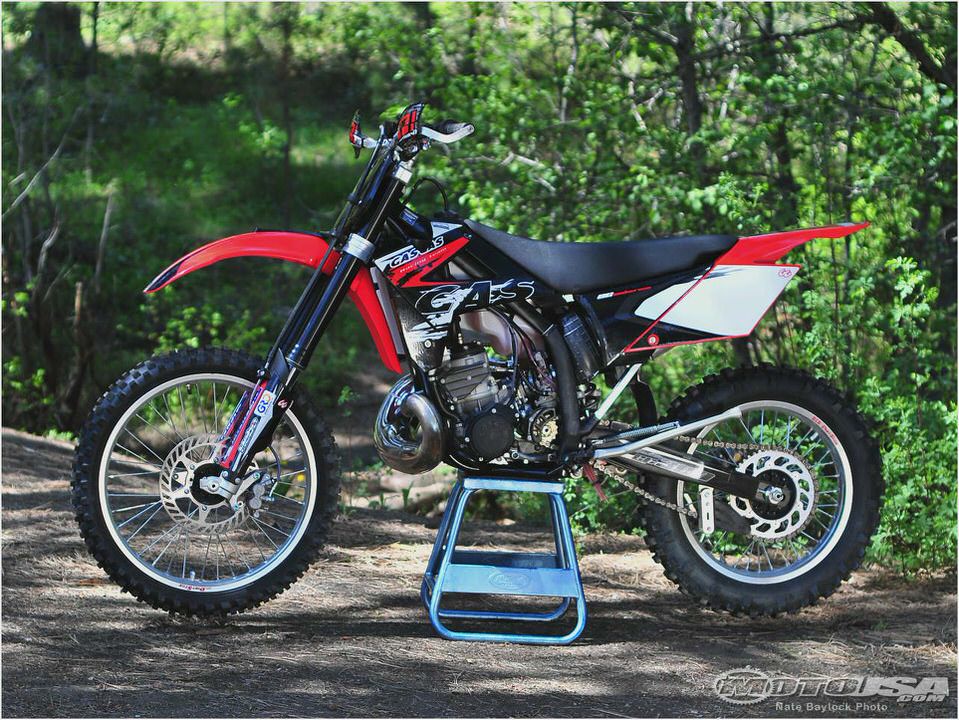
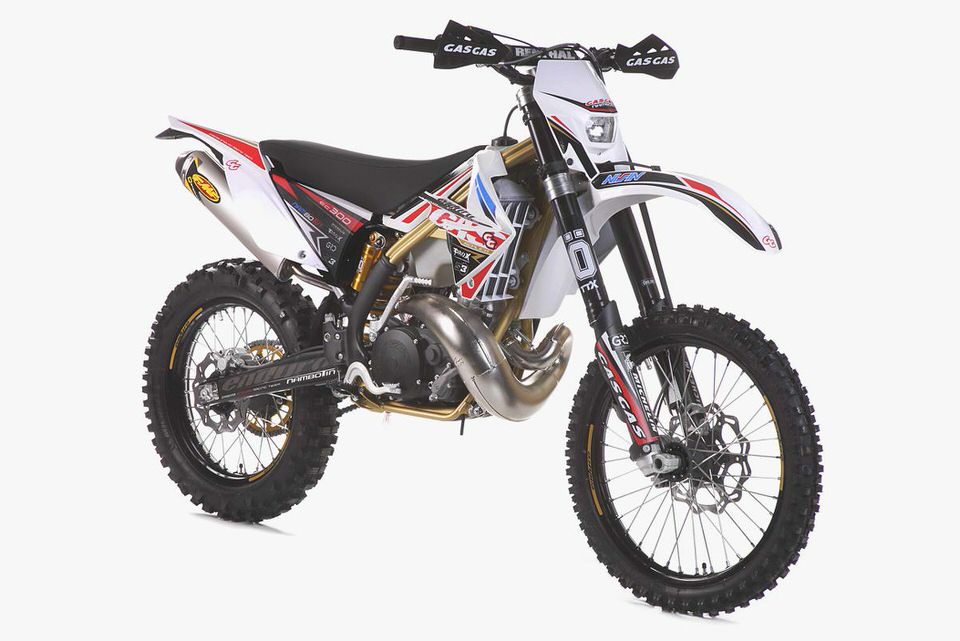
I sat beside the course for a couple of minutes before I realized I could hear voices. The end of the test was only 50 yards away. I pushed the bike to the finish, but lost a number of minutes in the process.
That was also the location of the gas stop. I am not sure exactly was caused me to run out of gas so quick. I leaned the needle out again at the check and the bike ran much better and I had no more issues.
I think that the float level may be a little too high and might have contributed to losing fuel out the overflow.
In the next test the bike felt much stronger with the leaner needle setting. It would pull second gear down to almost a dead stop. That meant less shifting and smoother riding. As the day progressed I felt faster and faster as I got more comfy pushing the bike around.
Through the technical trails it was a blast to ride, just one of those days when the course and bike feel like a perfect match for each other.
As for my race result, well that was pretty much out the window when I ran out of gas. In fact I was not the only one to run out in that section. But the day was a great success in terms of having fun.
I think the Gas Gas often gets a bad rap in the industry. The situation with the importers has been so unstable over the years and that certainly is one contributing factor. But it is more than that.
I am surprised how difficult it can be to get some people to even look at the bike. I have honestly had more than one industry person, including journalists, say “I rode one of those once a few years ago”; as if that was enough for them to know everything there was ever to know. Many of these same people get excited about bold new graphics on other brands of bikes.
On the other hand I have regular riders come out of the woodwork just to get a chance to look at the new bike. Even at the track, people walk up to look at the bike even thoug they have no idea what it is. If you are looking to see what choices are available in the two stroke market, this bike is a must see.
There is a lot to like about it.
The motor is strong and smooth. It is plenty fast but still has a good trail personality. Handling is very light without being nervous or twitchy. It is easy to ride fast and does not require much of effort to do so. The brakes are very good, nearly on par with the KTM and better than just about everything else.
The AJP Juicy clutch is ultra light and smooth. The suspension has come quite a ways from the previous models. The shock works very well. The fork gets better every ride.
The stock spring rates should suit most riders. The four position bar mounts let the cockpit riding position open up enough to fit me.
As for the things I don’t like the list is not too long. The rear brake pedal is a huge eyesore. Jordan Brandt has a Hammerhead YZ pedal grafted on his bike, but it took some machine work to accomplish. The stock Rental Twinwall bar is super strong, but way to stiff for me, even with the crossbar removed.
The stock GG pipe seems pretty flimsy, it dings easily and mine cracked down the seam.
The 300 has now left for FMF for a couple of weeks. Donnie Emler is considering designing a new exhaust for the bikes. Hopefully I will have something new to test when it comes back.
I also have an array of other parts to try out that will include a Clarke tank, Fastway stabilizer, Guts seat and protection from Bulletproof Designs.
My goal is to get the opportunity to race the 300 a few more times before it has to go back. The fact that I am looking forward to getting more race time on the bike pretty much sums up my opinion of it. It is a good package that is very rewarding to ride.
Out of the box it is nearly race ready and with just a little help I think it will be very competitive.
2011 Gas Gas XC300 Six Days: $7899 msrp
(from the GasGasmotos.es website, with Google translation)

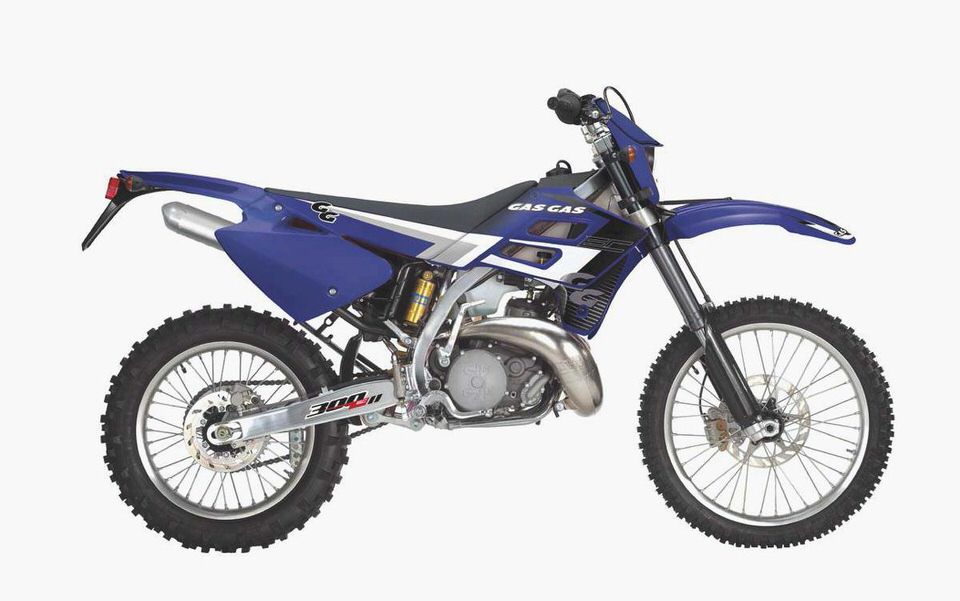
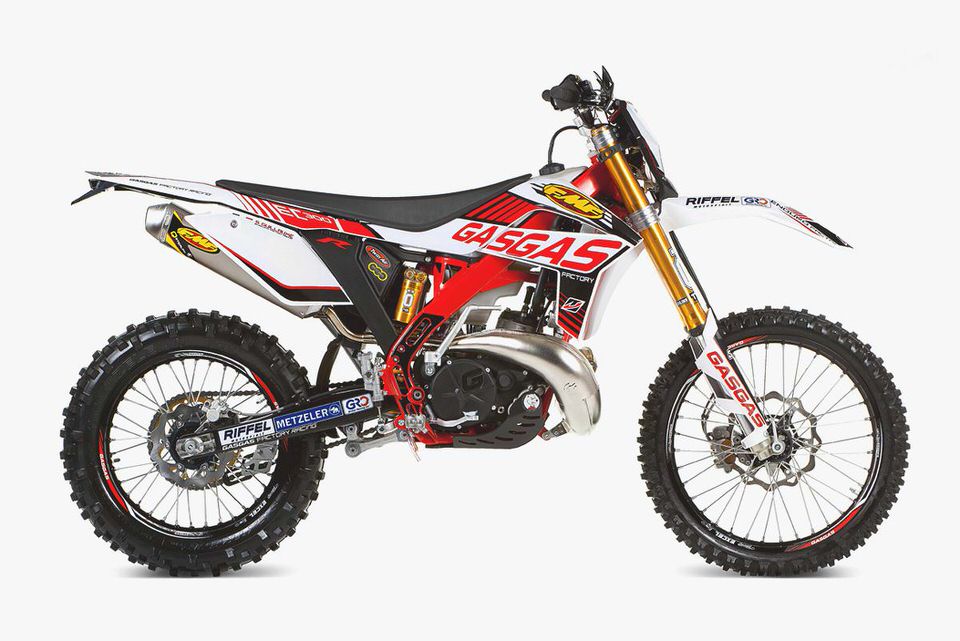
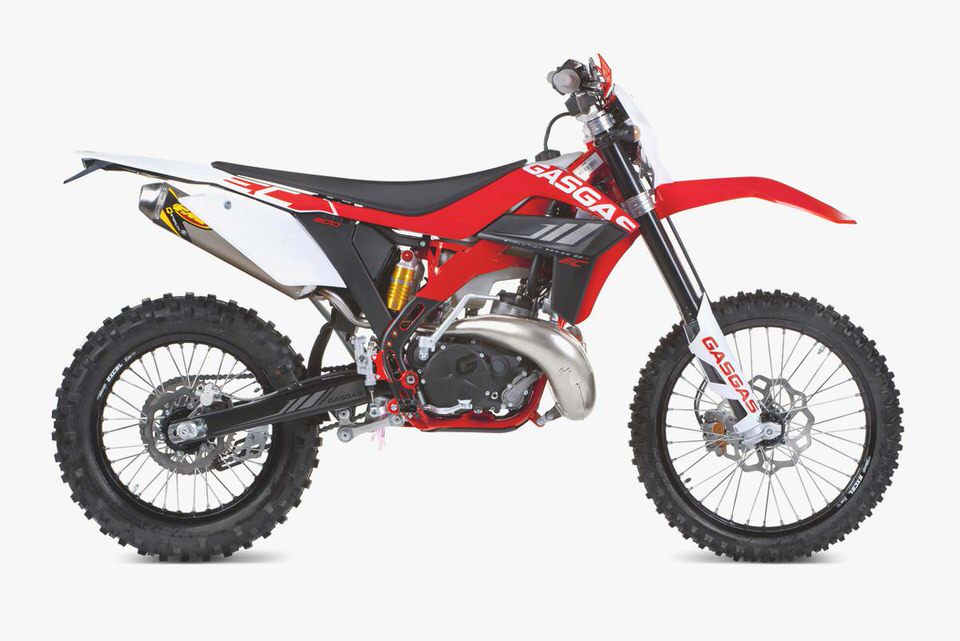
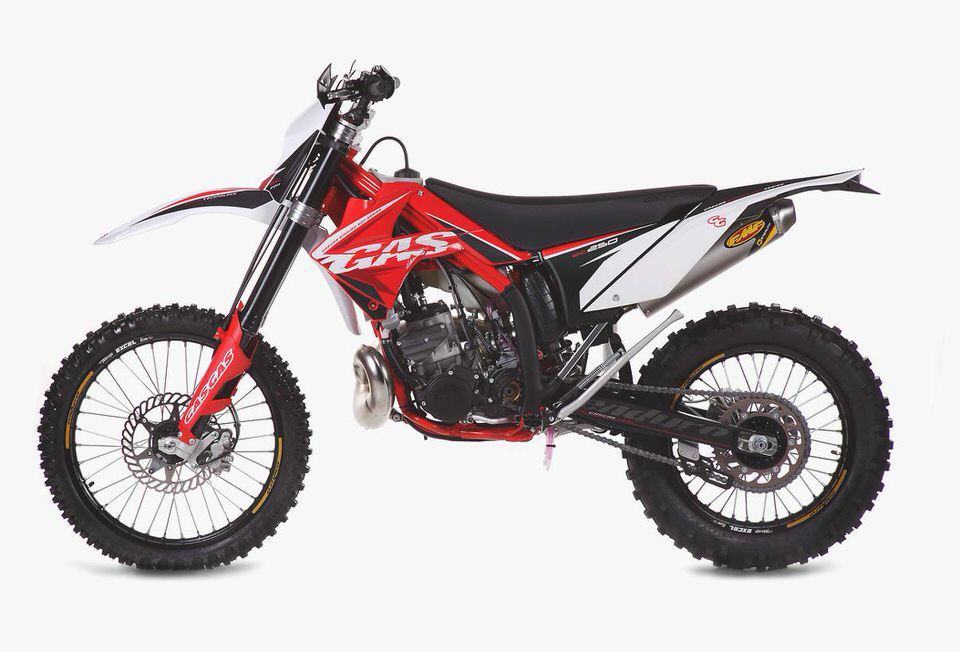
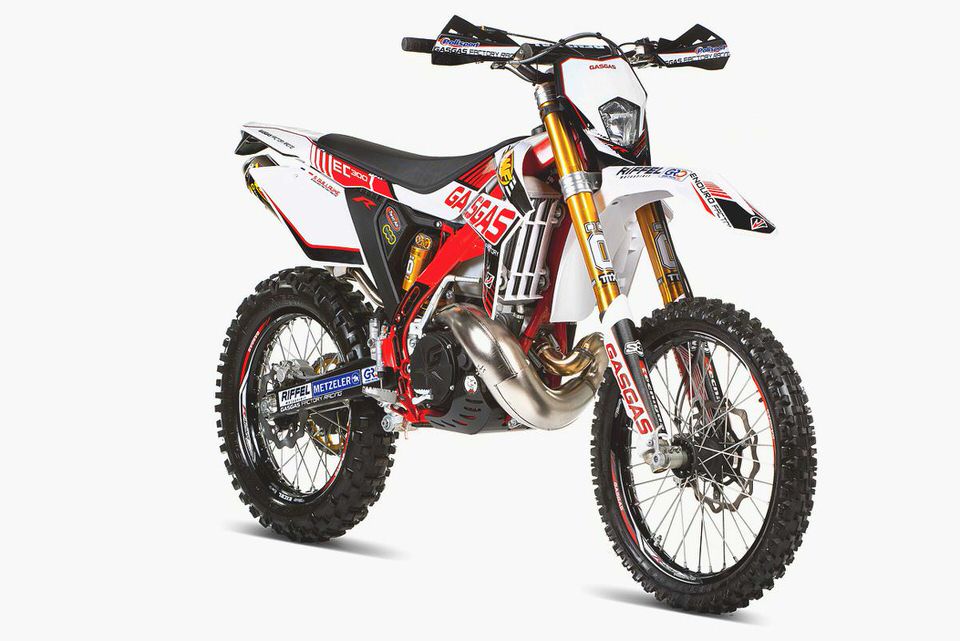
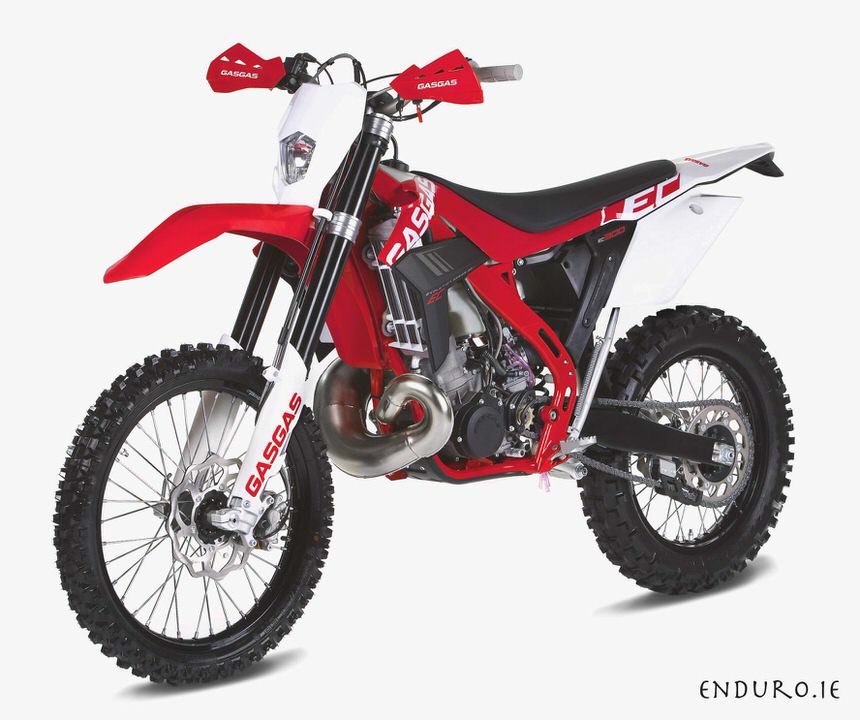
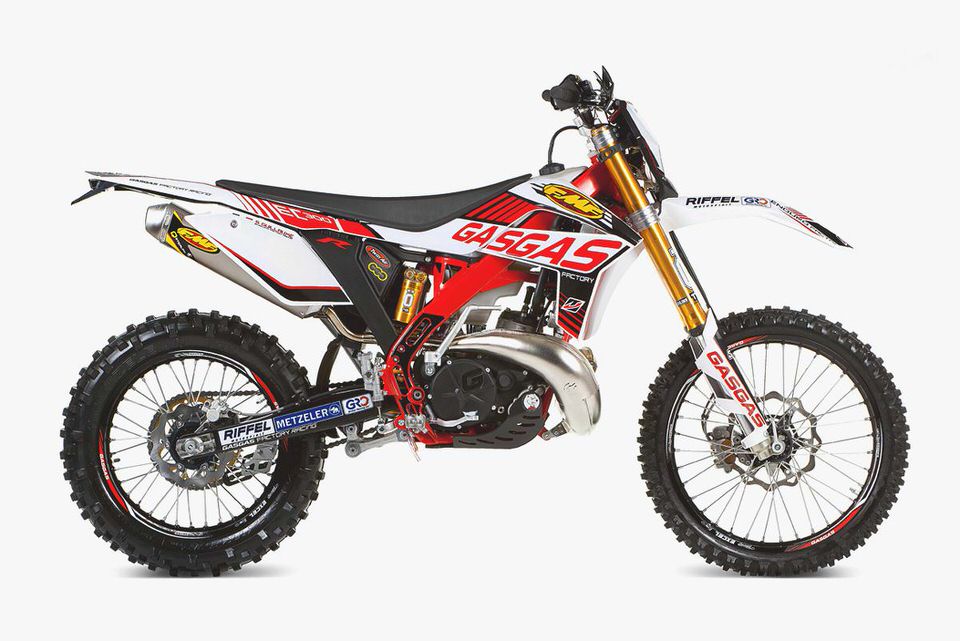
- Gas gas 250/300 EC
- Gas Gas EC 450 FSE – Cycle Torque Magazine
- Gas Gas Pampera 250 280 Motomerlin Merlin Motorcycles Beta Alp Serow XT225…
- GAS GAS EC 125 – 2003 SERVICE MANUAL Pdf Download.
- Gas Gas Pampera Review from NZ (Red Nova)

